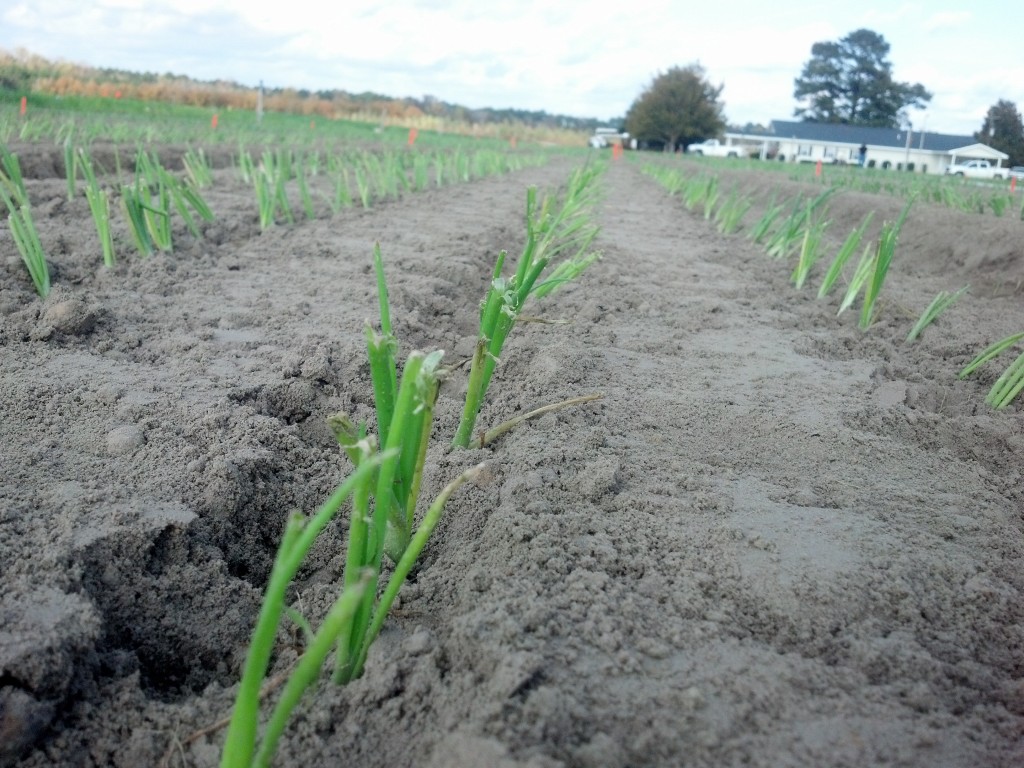Lenny Wells, our UGA Pecan Specialist, has a great article on pruning trees. Here it is below:
We’re headed into my least favorite time of year. When I was younger I enjoyed cold weather a lot more than I do now. The crop is about done, deer season is over, football is almost over, I’m not much of a basketball fan, and baseball won’t be starting up for a few months. In addition, we are starting up the grueling meeting season, which runs through the end of March. The meetings themselves are no problem but the road gets tiring and there’s always more catching up to do when I get back to the office. In the middle of all this, its pruning season and pruning young trees is one of my least favorite things to discuss primarily because there is no one correct way to do it. Most likely, if you ask a hundred different people how to prune a tree, you’ll get a hundred different answers.
Its difficult to describe pruning of a tree through a computer screen but I’ll do my best to explain my own method:
Year 1: Prune the tree back at planting by cutting off a portion of the top of the tree. The rule of removing about 1/3 of the tree at planting is thrown around a lot but that’s not set in stone. Basically, the larger the tree you plant, the greater percentage you need to cut back. If you plant a 3 foot tree, cut it back by only about 6-8″. If you plant a 6 foot tree, cut it back to about 4-4.5 feet in height, if you plant a 10 foot tree, cut about 1/2 of it off. The goal, no matter what size tree you plant, is to bring the above ground portion of that tree back to a size that the limited root system can support. A tree removed from the nursery bed and re-planted in the ground will undergo transplant shock to some extent, the more above ground portion the reduced root system has to support, the greater the shock, the more stress that tree will be under and the less vigorous, new growth it will put on. Following the initial pruning at planting I leave the tree alone throughout the whole growing season, allowing it to produce and retain as much foliage as possible to feed the root system for the following year’s growth.
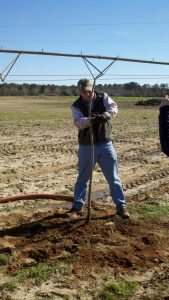
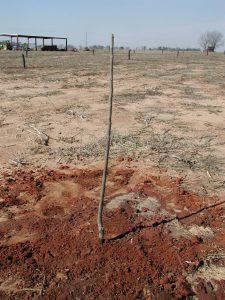
Year 2: In most cases, going into the second growing season, I will prune the tree back to one central leader again and tip the end of the central leader about an inch above a bud, just below where the buds begin to space out more. The buds are generally clustered closely together near the top of the tree. Definitely prune out any forked or “V” shaped structures and crow’s feet (a cluster of limbs all shooting out from the same point). The goal here is to have one central leader. You want your first scaffold limbs to be head high or a little above head high to allow for the passage of equipment through the orchard as the tree grows. If you don’t cut any lower limbs off now you will be doing it later with a chain saw when they are bearing nuts, which makes it harder to do. Most trees going into the second year do not have any limbs high enough (about 6 feet) to leave as scaffold limbs. If they do, see comments for year 3 below.
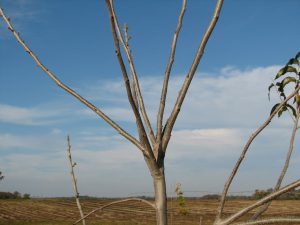
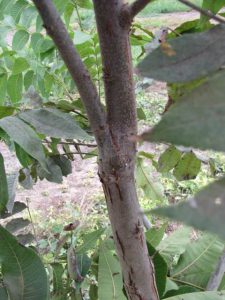
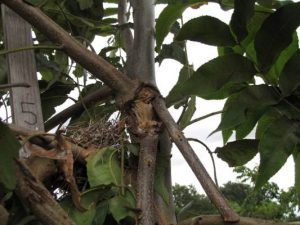
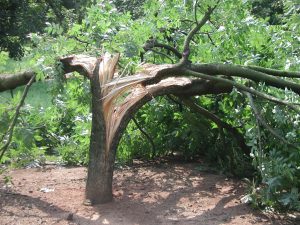
Year 3: Leave one or more scaffold limbs going up the tree beginning at about 6 feet, spaced at roughly 12″-18″ apart. Again there’s no magic about the numbers here, 12-18″ is just a general guideline. Its ok if they’re 10″ apart or 24″ apart. You want the scaffold limbs to be at about 60-80 degree angles, ideally. Try to alternate leaving scaffold limbs on one side of the tree and then the other so that they are staggered and balance out. Remove any shoots or limbs coming off the scaffold limbs growing toward the inside of the tree. This will allow air flow and sunlight into the center of the tree. Narrow angles less than 60 degrees should be eliminated because they are likely to break out or split. Keep the central leader going in the top of the tree for as long as you can reach it. Prune out any more forks and crows feet that have developed. Don’t tip the ends of scaffold limbs or branches in the winter. This tends to make them grow out more vigorously and may generate more crows feet and branching. Tip pruning of limbs should be done in summer to prevent this.
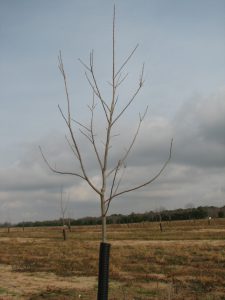
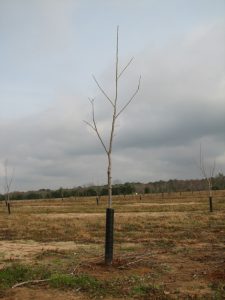
Year 4 and beyond: Keep to the same pattern as Year 3. Usually if you are diligent about pruning in the first 3 years there is very little to be done after that.
Pruning is much more difficult on some varieties than others based on their branching structure. For example an Oconee is very easy to prune because it tends to naturally grow along a central leader and develop scaffold limbs with good angles coming off the trunk. However, Pawnee develops many clusters of branches at narrow angles that must be pruned away. Pawnee is in fact probably the most difficult variety to prune or at least the one that requires the most work. Don’t be afraid of pruning too hard. In most cases, growers err on the side of not pruning enough. young trees respond well to pruning, which only makes them more vigorous and healthy.
